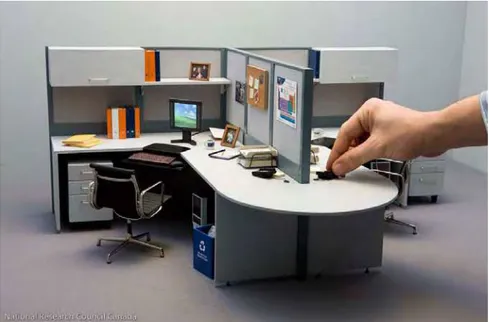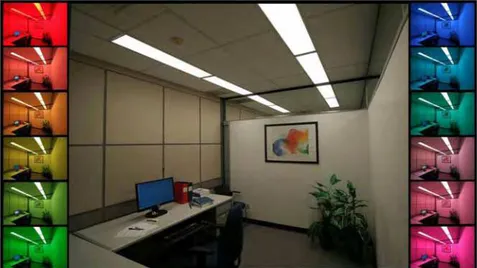Publisher’s version / Version de l'éditeur:
LEDs Magazine, Apr/May, pp. 65-67, 2011-04-26
READ THESE TERMS AND CONDITIONS CAREFULLY BEFORE USING THIS WEBSITE.
https://nrc-publications.canada.ca/eng/copyright
Vous avez des questions? Nous pouvons vous aider. Pour communiquer directement avec un auteur, consultez la première page de la revue dans laquelle son article a été publié afin de trouver ses coordonnées. Si vous n’arrivez pas à les repérer, communiquez avec nous à PublicationsArchive-ArchivesPublications@nrc-cnrc.gc.ca.
Questions? Contact the NRC Publications Archive team at
PublicationsArchive-ArchivesPublications@nrc-cnrc.gc.ca. If you wish to email the authors directly, please see the first page of the publication for their contact information.
NRC Publications Archive
Archives des publications du CNRC
This publication could be one of several versions: author’s original, accepted manuscript or the publisher’s version. / La version de cette publication peut être l’une des suivantes : la version prépublication de l’auteur, la version acceptée du manuscrit ou la version de l’éditeur.
Access and use of this website and the material on it are subject to the Terms and Conditions set forth at
NRC-IRC imagines the future of solid-state lighting in offices
Dikel, E. E.; Veitch, J. A.
https://publications-cnrc.canada.ca/fra/droits
L’accès à ce site Web et l’utilisation de son contenu sont assujettis aux conditions présentées dans le site LISEZ CES CONDITIONS ATTENTIVEMENT AVANT D’UTILISER CE SITE WEB.
NRC Publications Record / Notice d'Archives des publications de CNRC:
https://nrc-publications.canada.ca/eng/view/object/?id=23d10e1e-756c-41d7-b186-b70cb842cee2 https://publications-cnrc.canada.ca/fra/voir/objet/?id=23d10e1e-756c-41d7-b186-b70cb842cee2http://www.nrc-cnrc.gc.ca/irc
N RC-I RC im a gine s t he fut ure of solid-st a t e light ing in offic e s
N R C C - 5 3 9 8 9
D i k e l , E . E . ; V e i t c h , J . A .
A p r i l 2 0 1 1
A version of this document is published in / Une version de ce document se trouve dans:
LEDs Magazine,
Apr/May, pp. 1-4, April 26, 2011
The material in this document is covered by the provisions of the Copyright Act, by Canadian laws, policies, regulations and international agreements. Such provisions serve to identify the information source and, in specific instances, to prohibit reproduction of materials without written permission. For more information visit http://laws.justice.gc.ca/en/showtdm/cs/C-42
Les renseignements dans ce document sont protégés par la Loi sur le droit d'auteur, par les lois, les politiques et les règlements du Canada et des accords internationaux. Ces dispositions permettent d'identifier la source de l'information et, dans certains cas, d'interdire la copie de documents sans permission écrite. Pour obtenir de plus amples renseignements : http://lois.justice.gc.ca/fr/showtdm/cs/C-42
NRC-IRC Imagines the Future of Solid-State Lighting in Offices
Dr. E. Erhan Dikel and Dr. Jennifer A. VeitchNRC-Institute for Research in Construction Building M-24, 1200 Montreal Road, Ottawa ON K1A 0R6
E-mail: erhan.dikel@nrc-cnrc.gc.ca
The Lighting Sub-program at the National Research Council of Canada Institute for Research in Construction (NRC-IRC) has examined the effects of office lighting on occupants’ perception, performance, and satisfaction and on energy-efficiency for over 30 years. The promise of LED technology brings together these two strands. Market acceptance of the new technology will require that it be trusted as healthful and safe, and the initial cost premium will mean that the new systems need to offer features that users value, if LEDs are to displace the incumbent fluorescent technology. NRC-IRC began in 2008 to investigate LED technologies with two overlapping activities: the development of new ideas for office lighting with LEDs, and laboratory experiments addressing how people would use and respond to the colour-tuning capabilities of solid-state lighting systems. This article gives a sample of the activities in this project. For additional information, visit our web site: http://www.nrc-cnrc.gc.ca/eng/projects/irc/solid-state.html
New Ideas
LED technology is radically different from existing light sources and opens new directions in lighting design. We brought together a group of people with diverse backgrounds and expertise from industry, market, and academia for a design charette in which we tried to imagine what a novel LED lighting system might be like. The ideas that came from the charette have directed both experimental design and demonstration projects.
Scale Model Experiment We started experimental work with a scale model experiment in which we examined the range of colour temperature and spectral power distributions of participants’ preferred lighting conditions. The scale model was a cost-effective option to create and test the desired scenarios. Participants viewed each lighting condition on a 1/6 scale model of a typical office in a light booth (Figure 1). We introduced common office accessories to make the model as realistic as possible, with Organic Light Emitting Diodes (OLEDs) for the computer monitors. The overall colour scheme was monochromatic grey, to avoid having any one
colour bias the judgements. Some of the small accessories (e.g., folders and framed pictures) were painted with saturated colors to provide accents.
Figure 1. The Scale Model
LEDs Magazine April‐May 2011
Participants first evaluated the appearance of the model in terms of its colourfulness, pleasantness, and brightness, under six lighting conditions: a 4100 K fluorescent source and five LED spectra created using various combinations of the five channels. Scenarios A (2855K) and D (6507K) were inspired from CIE Illuminants A and D65 with respect to their correlated colour temperature (CCT). The other three LED scenarios, E (3728K), B (4751K) and C (5769K) were distributed evenly by CCT on a scale between Scenarios A and D. Scenario E was specifically adjusted to 3728K to match the effective CCT of the fluorescent lamps (Figure 2). In the second phase of the experiment, each participant was free to adjust the five channels of LEDs to create their preferred light: once with no constraints, and another time with a constraint of 500 lux maximum on the work surface.
Figure 2. The Spectral Power Distribution graphs of the six presets.
Initial results showed a wide range of preferences for light source spectrum, and thus no single preference for any one lighting condition, even when participants had the controls. These results confirm the importance of individual, personal control over their light. LEDs with multiple channels can offer individual control over light source spectrum, this is almost impossible with other technologies, offering functionality not previously available (Figure 3).
Figure 3. The initial results plotted on the CIE diagram
LEDs Magazine April‐May 2011
Full-Scale Experiment
Next, we shifted to full scale. We redesigned one of the labs at NRC-IRC by equipping it with eight in-house-designed LED luminaires (Figure 4). Each luminaire has eight RGBW LED light engines that can each be controlled with a DMX protocol; the total maximum light output from each luminaire is approximately 3500 lumens. Users may create a preferred white colour using custom software to control the LEDs; the interface uses the computer mouse as a pointer over a carefully designed colour palette. The software reads the RGB values from the picture on the computer screen and converts these into digital signals. In this experiment, participants work in the office for a full day, completing simulated office work and questionnaires about their judgements of the space, their mood and their satisfaction. The day starts with a fixed spectrum (either 3000 K or 6500 K), and half of the participants have the opportunity to control the spectrum starting after lunchtime. Data collection for this experiment is ongoing, and preliminary results will be available in summer 2011.
Figure 4. The full‐scale experiment setup with various light combinations.
LEDs for Future Offices
LEDs allow us to do things that we cannot do with conventional fluorescents, metal halide lamps or halogen lamps. They can be controlled electronically and can be integrated into smart building control systems. Their efficiency is increasing each day. As with all other new technologies, the lighting industry will solve some of the issues like high initial costs, colour quality, discontinuous spectral power distributions, and possible flicker. The promise of LED technology is impressive; however, it may be too early to say that LEDs are the future of general room lighting. Offices will definitely need something better than the existing fluorescent fixtures, but without more attention to the usability issues of the new technology, it will not achieve the promises of reduced energy use for lighting. Only a small fraction of LED research focuses on the human factors of LED lighting, but without better knowledge of how people perceive spaces lit with LEDs, how they would use LEDs, and how LEDs affect their performance and health, adoption may be impeded. NRC-IRC research is intended to fill that gap, but the scope of the research issues is too great for any one laboratory to resolve them alone.
Acknowledgements
This project is sponsored by Natural Resources Canada (Panel on Energy Research & Development, Office of Energy Efficiency, Clean Energy Fund), British Columbia Hydro, Philips (Color Kinetics, Canlyte and Lightolier), Lutron, Go Lighting, Group IV Semiconductor, Public Works and Government Services Canada, the University of British Columbia - Structured Surface Physics Laboratory, and the NRC Institute for Research in Construction.
LEDs Magazine April‐May 2011


